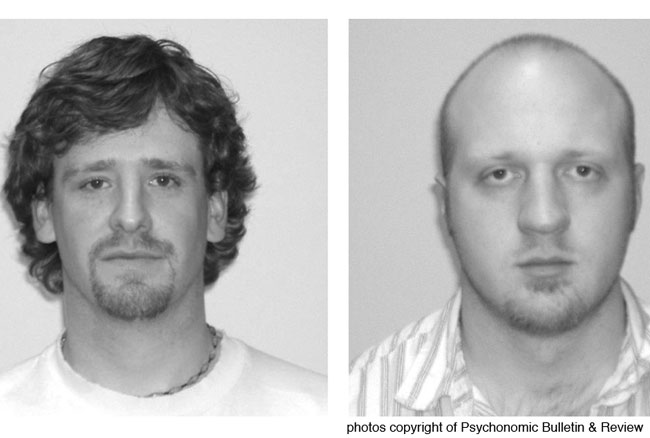Face Recognition: Bobs Don't Look Like Tims

It’s easier to remember a “Bill” who really fits the bill, according to a new study. Names tend to be associated with certain facial features—Bobs have rounder faces than Tims, for example—and it’s easier to learn a person’s name if his face matches it. Robin Thomas, a cognitive scientist at Miami University in Ohio, noticed that she frequently confused the names of two of her students. This didn’t happen to her often, so she wondered if there was more to it than just forgetfulness. Then she realized this. “Their faces did not fit the name they were given,” Thomas said. Intrigued, she decided to test whether Americans have common ideas about what people with certain names should look like. She and her colleagues asked 150 college students to design faces, using facial construction software similar to the type police use, for 15 common American male names. To keep things simple, all of the faces were white and wore the same hairstyle. Her team then asked a second group of students to rate how well these constructed faces seemed to fit their names. The group agreed that many of the constructs matched—the strongest fits were for the names Bob, Bill, Brian and Jason. Finally, Thomas wanted to see whether, as in her own experience, better-fitting names were easier to remember and vice versa. Her team showed a third group of students the facial constructs—including both good and bad fits, as judged by the students in the second part of the study—along with their names. Later, they tested how well the students remembered the names. As she suspected, people more easily remembered the names that fit well. “The better the fit of the name to the face, the faster the participants were to learn to associate those names,” Thomas told LiveScience. Her results will be detailed in an upcoming issue of the journal Psychonomic Bulletin & Review.
Thomas next plans to study why these stereotypes exist. Parents may, for example, name their babies to fit their general features, like the shapes of their faces. And as for why certain names seem to accompany specific features, it could be that there is an interaction between a name’s sound and how it’s visually perceived, said Thomas. For example, “Bob is a round sounding name, and the face that was generated for that name was round,” she said.
- False ID: Face Recognition on Trial
- Study: In Nude Photos, Men Look at Nude Faces First
- Fatherhood at First Sight: Women Can Spot Good Dads By Thier Faces
Get the world’s most fascinating discoveries delivered straight to your inbox.


